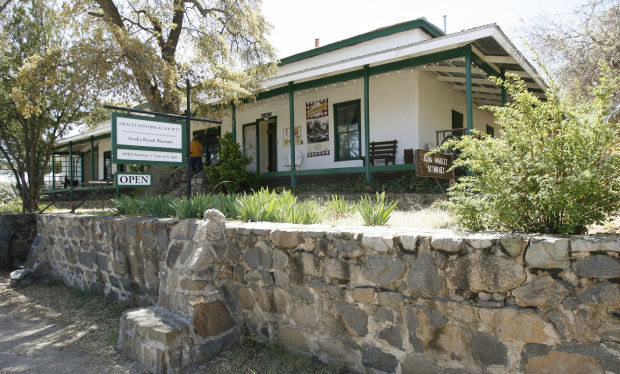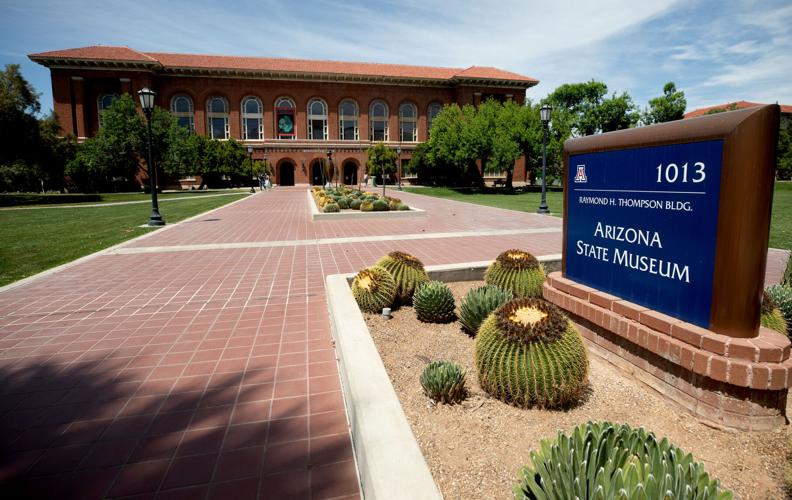Just over 30 miles north of Tucson, the small town of Oracle sits among a tangle of prickly Joshua trees, an abundance of cactus and under the shadow of Biosphere 2. There is plenty going on in the area ŌĆö dude ranches to visit, zip lines to ride, jeep tours to traverse the landscape and aromatic lavender fields to explore.
There is also a rich history of early Hohokam and Salado societies that farmed and lived in the area centuries ago. These early people left behind a wealth of artifacts that archaeologists have been studying for years, although one of the most prevalent individuals to collect and preserve these early objects had no formal training and earned no degree for her lifeŌĆÖs work.
Alice Hubbard Carpenter was an ŌĆ£avocational archaeologist,ŌĆØ the custodian of ancient materials she collected and preserved throughout the region. Professional archaeologists sought her expertise and were amazed at the collection she amassed during the 50 years she cared for the artifacts she documented and treasured.
People are also reading…
Born in Detroit on June 18, 1898, Alice moved with her parents to Florida while she was still a child. At age 19, she married Jesse Fairfield Carpenter, who owned a nearby orange grove. The couple had a son who was named after his father but nicknamed Kippy.
Twenty-eight-year-old Jesse Sr. died in 1920, a victim of the Spanish flu epidemic that spread around the world. Alice left Florida with young Kippy and settled in California. Kippy was diagnosed with asthma and doctors recommended a drier climate. Alice and Kippy moved to Arizona in 1924.
Three years later, on a brief trip back to California, Kippy contracted polio and died. About the same time, Alice discovered she had tuberculosis. She returned to Arizona to recover, settling in Oracle.
Initially, Alice lived in a tent to which she added a bear grass, hand-thatched garage. She built a three-bedroom adobe house in 1937 and a second home 10 years later with saguaro-ribbed ceiling and brick floor that she laid herself. She made a great deal of her own furniture and eventually added a swimming pool.
She fished in the San Pedro River and protected abandoned animals that came across her path. She argued with Arizona Game and Fish for favoring hunters by allowing the trapping and skinning of bobcats and coyotes to appease the apparel industry.
She was also a frugal woman who let nothing go to waste. When a quail slammed into her window and broke its neck, she mourned its death and then cooked it for dinner.
She played an active role in the town and worked in the local post office for 10 years. She helped preserve the historical Arcadia Ranch that became home to the Oracle Historical Society.
Apaches and Tohono OŌĆÖodhams came to Oracle annually to gather acorns and bear grass and were welcome to stay on AliceŌĆÖs property.
Alice was immediately drawn to the culture of ancient tribes and the artifacts they left behind. ŌĆ£IŌĆÖm a scavenger,ŌĆØ she proclaimed. ŌĆ£I dig in the ruins of ruins.ŌĆØ
But it was the story of the people behind the broken pots and shards that interested her even more than the artifacts themselves. She was as keen on knowing about the people who created these objects as she was in collecting and documenting what remained of their societies. She was particularly attracted to the Hohokam people.
Pots, arrowheads, figurines, animal bones carved into awls, shells, baskets and turquoise beads all made their way into AliceŌĆÖs home to be recorded and labeled. Her collection amounted to around 10,000 shards of ceramics, 350 projectiles or Clovis points, and 100 pieces of shell jewelry.
Alice identified three districts in which she primarily collected: The Oracle District, which included the town of Oracle; the Willow Springs District, consisting of the area west of Oracle and north of Oracle Junction; and the San Pedro District, a narrow passageway that ran from Redington Pass north to Winkelman. A good portion of the sites within these districts retain the names she initially gave them.
Many of her neighbors were delighted to ride with her as she chugged along in the battered Jeep she christened ŌĆ£The SpoilerŌĆØ to see what interesting items she would haul home.
One neighbor uncovered a large object that he thought was nothing but a copper float from a toilet tank, but Alice recognized the piece as similar to old bells she had seen in archaeological reports. She persuaded the man to give the bell to Emil Haury, then head of the Archaeology Department at the University of Arizona. The bell is considered the largest known prehistoric copper bell found in the Southwest to date.
Archaeologists from around the country came to explore the excavations Alice uncovered. She corresponded frequently with eminent professors and professionals who often asked and valued her opinion on particular items.
In the early 1970s, Alice started writing a journal about her discoveries, documenting every small artifact she uncovered. She listed 17 sites she had explored and drew sketches of the sites and her findings.
After her death on April 5, 1982, at the age of 83, the journal that held her lifeŌĆÖs work and adventures was named after an ancient figurine she had found, ŌĆ£The Feather Prince: A Personal Narrative of Southeastern Arizona Prehistory.ŌĆØ
At the conclusion of her report, she noted she had ŌĆ£come to the end of the San Pedro River and about the end of my ŌĆślineŌĆÖ ŌĆö and the pursuit of my beloved Hohokams. It has been a happy quest, and I hope some of the culture has ŌĆśrubbed offŌĆÖ on me.ŌĆØ
She ended her narrative with a quote from Shakespeare: ŌĆ£I have been at a great feast, and stolen the scraps.ŌĆØ
Alice donated the majority of her collection to the Arizona State Museum, but many items remain in Oracle and can be viewed at the Oracle Historical Society and Museum as well as the Oracle Public Library.
A new study identifies the oldest human footprints ever found in North America. Video courtesy of NPS/USGS/Bournemouth University
Jan Cleere is the author of several historical nonfiction books about the early people of the Southwest. Email her at Jan@JanCleere.com. Website: .











